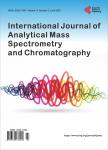LC-MS/MS Method for Determination of Colistin in Human Plasma: Validation and Stability Studies
LC-MS/MS Method for Determination of Colistin in Human Plasma: Validation and Stability Studies作者机构:Clinical Studies and Empirical Ethics Department King Faisal Specialist Hospital & Research Center Riyadh KSA Alfaisal University College of Medicine Riyadh KSA
出 版 物:《International Journal of Analytical Mass Spectrometry and Chromatography》 (分析质谱与色谱期刊(英文))
年 卷 期:2021年第9卷第1期
页 面:1-11页
学科分类:081704[工学-应用化学] 07[理学] 08[工学] 0817[工学-化学工程与技术] 070303[理学-有机化学] 0703[理学-化学]
主 题:Colistin Clarithromycin Human Plasma LC-MS/MS
摘 要:A simple and reliable high performance liquid chromatography tandem mass spectrometry (LC-MS/MS) assay for the determination of colistin A and colistin B in human plasma was developed and validated. Clarithromycin was used as an internal standard (IS). Plasma extraction was performed using C-18 cartridges and methanol containing 0.1% formic acid. Analysis was performed using Atlantis dC18 (2.1 × 100 mm, 3 μm) column at room temperature and a mobile phase of 0.2% formic acid in acetonitrile and water (50:50, v:v), delivered at a flow rate of 0.2 ml/minute. Eluent was detected in the positive ion mode using electrospray ionization at the following transitions of mass to charge (m/z): colistin A, 585.6 → 101.4;colistin B, 578.7 → 101.3;and IS, 748.6 → 158.4. No interference by components of blank plasma or commonly used drugs was observed. The relationship between colistin A colistin B concentrations and their corresponding peak height ratios to the IS was linear over the range of 0.05 - 10 μg/ml. Inter-day coefficient of variation and bias were, respectively, ≤11.5% and −3.0 to 6.0 for colistin A and ≤9.9 and −4.7 to 3.0 for colistin B. Mean extraction recovery of colistin A, colistin B, and the IS were 97%, 94%, and 97%, respectively. The method was applied to assess the stability of colistin A and colistin B in processed samples (24 hr. at room temperature, 48 hours at −20°C) and unprocessed samples (24 hr. at room temperature, 8 weeks at −20°C) and after three cycles of freeze and thaw found to be ≥87%.



